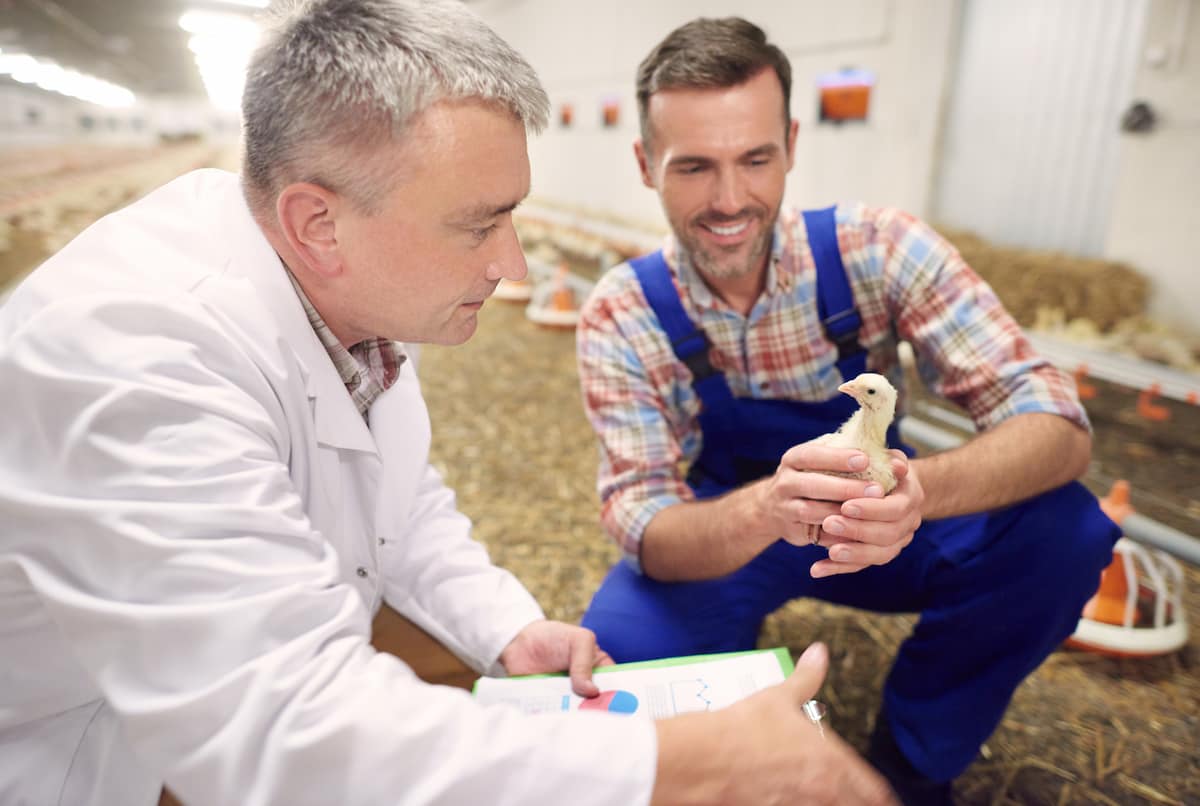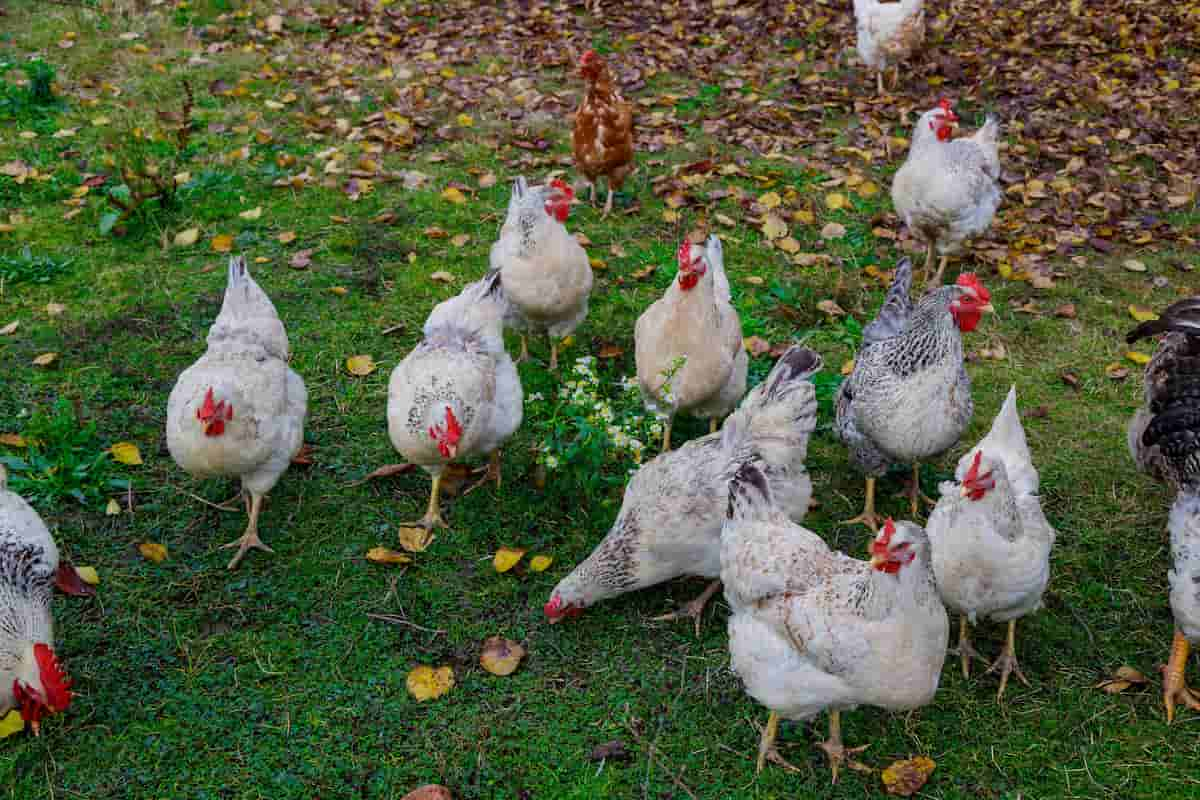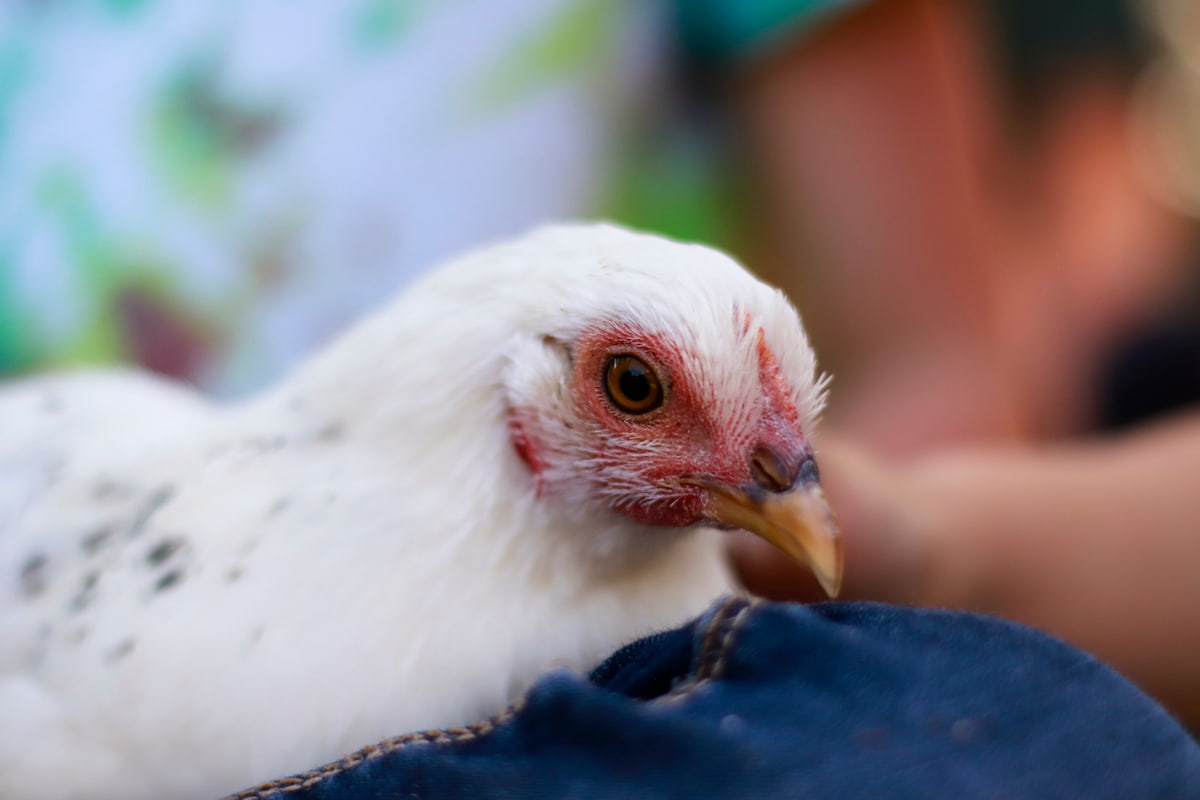Marek’s disease is a viral disease that primarily affects chickens and is caused by Marek’s disease virus, a herpes virus. It is a significant concern for both commercial and backyard poultry due to the potential for severe production loss and mortality. The virus affects the nerves and can lead to the formation of tumors in the internal organs of infected birds. While chickens are the primary species affected, the disease can occasionally occur in other bird species.

Marek Disease Management in Chicken
Causes of Marek’s Disease
- Marek Disease is caused by a herpes virus that can survive for extended periods in poultry houses, droppings, litter, dust, feather follicles, and dander.
- The virus is contagious and can be transmitted by direct and indirect contact, mainly through the inhalation of infectious materials such as dust, dander, and epithelial cells of feather follicles, as well as through fomites, personnel, and beetles.
- Suppose the virus is introduced into a chicken flock. In that case, it spreads quickly from bird to bird, with infected chickens becoming carriers for long periods and acting as sources of infectious virus.
- The incidence of the disease varies on factors such as the strain and dose of the virus, age at exposure, maternal antibody, host genetics and gender, environmental stress, and concurrent diseases. Vaccination can reduce the shedding of the virus but not prevent it entirely.
Disease Cycle of Marek’s
- The early cytolytic phase: In this phase, the virus infects the epithelial cells of the feather follicles and starts replicating. The infected cells undergo lysis, releasing infectious virus particles. The virus then infects other epithelial cells, B and T lymphocytes, macrophages, and other immune system cells.
- The latent phase: In this phase, the virus infects B and T lymphocytes and establishes a lifelong latent infection. During this phase, the virus does not produce infectious particles and is not detected by the immune system.
- The late cytolytic and immunosuppressive phase: The virus reactivates and infects T lymphocytes, causing lymphomas to form in various organs such as the liver, spleen, and kidneys. The virus also produces immunosuppressive factors that impair the function of the immune system, making the bird more susceptible to other infections.
- The proliferative phase: In this phase, the virus causes the proliferation of T lymphocytes, resulting in the formation of lymphomas in various organs. The virus also causes other proliferative disorders, such as nerve tumors and tumors of the iris.
Symptoms of Marek’s Disease
Marek’s disease is a viral disease that affects chickens and other poultry. It appears in two distinct forms: acute and classical. Here are the symptoms of Marek’s disease:
- Lameness or paralysis: Lameness or paralysis around 12 weeks of age is a common symptom of Marek’s disease. Birds may have partial or complete paralysis of wings and legs, making them unable to stand. A transient paralysis syndrome may also cause a characteristic posture of one leg held forward and the other held backward as lesions progress.
- Sudden death: The acute form of the disease is manifested by sudden deaths due to the formation of lymphomas in the visceral organs.
- Depression: Birds may show depression and may be reluctant to move around.
- Anemia, anorexia, and emaciation: Birds may experience anemia, anorexia, and emaciation due to the effects of the virus on their immune system.
- Weight loss and diarrhea: Marek’s disease can cause weight loss and diarrhea in birds.
- Incoordination: Classical form of the disease involves lesions in the nerves of birds above 12 weeks, which commonly results in incoordination.
- Twisting of neck: Twisting of the neck (torticollis) may result from the involvement of cervical nerves and paralysis.
- Dilatation of crop: Paralysis of the vagus nerves may cause dilatation of the crop.
- Blindness: Unilateral or bilateral ocular involvement may cause blindness in some cases.
In case you missed it: Coccidiosis Disease Management in Chicken: Symptoms, Treatment, Prevention and Management of Disease

Diagnosis of Marek’s in Chicken
- The diagnosis of Marek’s disease in chickens requires a veterinary examination, and it involves a combination of clinical signs, laboratory tests, and post-mortem findings.
- During a physical examination, the veterinarian will look for symptoms such as lameness, paralysis, weight loss, anemia, and other neurological signs. Additionally, the vet may conduct laboratory tests, including a complete blood count, serology, and PCR testing to confirm the presence of Marek’s disease virus in blood or tissue samples.
- A definitive diagnosis of Marek’s disease can be made post-mortem. During a post-mortem examination, the vet will examine the internal organs for tumors, such as lymphomas, which are common signs of Marek’s disease. Additionally, the sciatic nerve, which is commonly affected in chickens with Marek’s disease, will be examined for enlargement.
Treatment and Control of Marek’s Disease
- There is no effective treatment for Marek disease in birds. The best approach is to focus on prevention through vaccination, biosecurity measures, and good management practices.
- Vaccination is the primary tool for preventing Marek’s disease, and commercial poultry producers typically use vaccines to protect their flocks.
- Backyard flock owners should purchase birds from reputable sources that have been correctly vaccinated.
Preventive Measures of Marek’s Disease in Chickens
- Preventing Marek’s disease in chickens involves a combination of measures, including vaccination, good biosecurity, and proper hygiene.
- For commercial flocks, it is important to ensure that chicks are vaccinated with a proper vaccine and reared separately to prevent exposure to infected dust and fluff.
- Maintaining good hygiene by regularly cleaning and disinfecting sheds and equipment, providing good nutrition, and preventing other diseases and parasites.
- For backyard flocks, purchasing vaccinated birds from a reputable source is recommended.
- Additionally, following good biosecurity practices and using effective disinfectants can help prevent the spread of the virus.
- Breeding genetically resistant strains of chickens can also help control the disease.
- Depopulating, cleaning, and disinfecting all sheds and equipment may be necessary in cases where a flock has a serious Marek disease problem.
- After several months, vaccinated chicks from a reputable hatchery can be introduced as replacements.
- A combination of vaccination, good biosecurity, hygiene practices, and genetic resistance can help prevent and control Marek’s disease in chickens.
In case you missed it: Fowl Cholera Disease Management in Chicken: Symptoms, Treatment, Diagnosis and Prevention of Disease

Conclusion
Marek’s disease is a serious viral disease that affects chickens and can cause significant production losses and mortality. The disease is caused by the herpes virus and is primarily transmitted through direct and indirect contact with infected birds or contaminated materials.
Although vaccination is commonly used to prevent Marek’s disease in commercial flocks, good biosecurity practices and hygiene measures are also essential to control the disease. In addition, breeding genetically resistant strains of chickens can be used to help control the disease. Early detection of the disease and prompt implementation of control measures can help reduce the impact of Marek’s disease on chicken flocks.
- Beneficial Insects in Pest Management
- Natural Solutions for Pest Control in Flower Gardens
- Types of Fungicides Used in Agriculture
- Common Issues in the Fruit Development Stage of Pomegranate Farming
- Fruit Development Issues in Papaya: Easy Solutions and Treatment
- Soil-Borne Diseases and How to Protect Your Plants
- Practices to Prevent Disease Spread in the Garden
- From Wilted to Thriving: How to Treat Root Rot Naturally in Houseplants
- Natural Remedies to Cure Brown Spots on Fig Tree Leaves